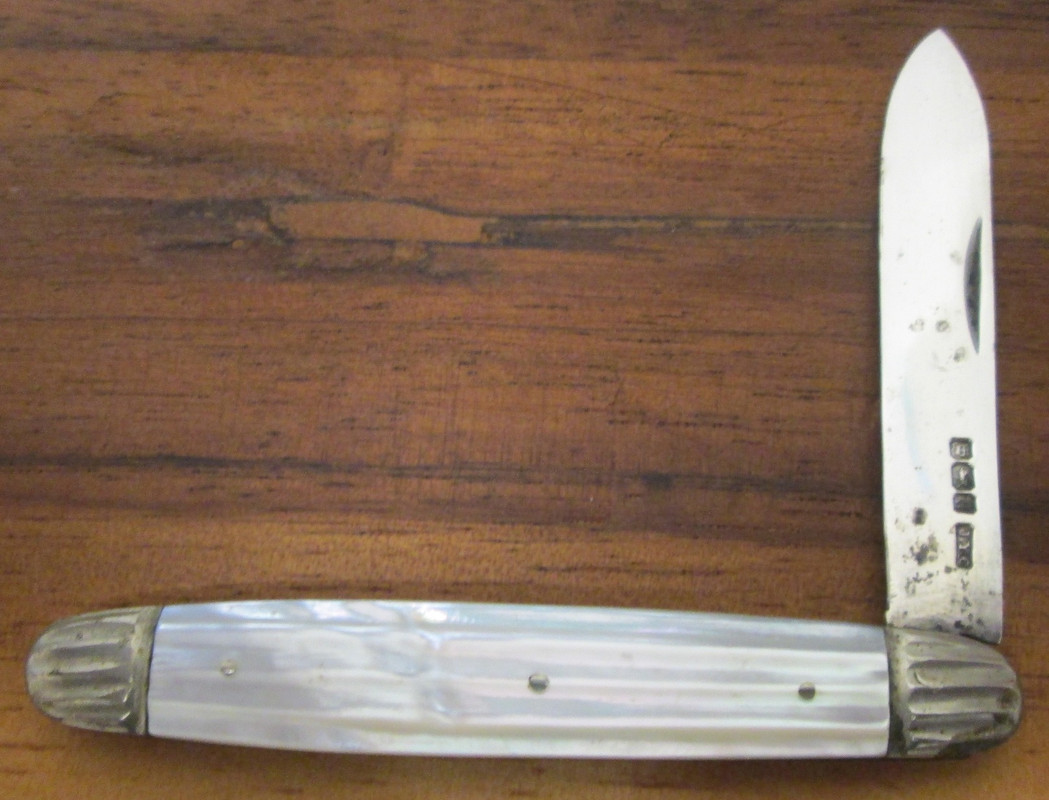Fruit knives with Sterling silver blades were a popular present from c1870s until the early c20th with the advent of stainless steels for kitchen purposes. Silver is hygienic but I wouldn't fancy trying to cut a large crisp apple with it, too soft! Fruit knives, vesta cases, card cases, watch-chains, snuff boxes in sterling were all popular presents and many were intricate and attractive items.
British hallmarking (England, Scotland, Ireland) has very clear markings as to purity, assay office-the majority being in England- date stamp and a bit more complicated , maker's mark. Sterling silver must reach a purity of .925 or 92.5% (Lion passant stamp) during the c19th there was also a higher grade as well called Britannia silver of .958 or 95.8% minimum silver, this carried a Britannia stamp. The monarch's head, mostly Victoria's, but also Geo.IV and William IV appeared on some items as a stamp. As shown already, Hallmark charts can be found online and provided the marks are in good condition and not worn down it is possible to ascertain the exact year of assaying by the date letter.
Interestingly, as Sterling silver has always been costly, manufacturers sought to find cheaper alternatives. What is now known as Old Sheffield Plate emerged in the mid c18th and soon became a popular cheaper alternative, it is basically a rolled layer of silver over a copper core. An advanced and complex process which was superceded by Electro Plated Nickel Silver or EPNS in mid c19th where an electric process plates items with silver, faster & cheaper that OSP. Both Old Sheffield Plate and EPNS had maker's marks and some EPNS marks were made to look rather like hallmarks to gull the unaware....
Here's a deep struck hallmark from Dublin, maker Charles Marsh with Britannia silver purity mark, Dublin mark (Irish harp) and Geo. IV head from 1830 on a piece of tableware. Spoons, serving forks, ladles, knife handles were all solid silver in rich homes. Shown here with a contemporary French knife, noteworthy that many French maker's and artisans still stamp their blades
 Jack Black
can give me info about the maker and approximate date of manufacture.
Jack Black
can give me info about the maker and approximate date of manufacture.










 .
.


